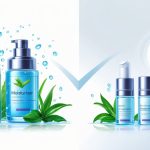Foundation Claims Beauty Editors Quietly Separate From Real Results
Preparation Steps for Flawless Foundation Application
How many times have I layered foundation only to realize by lunchtime that something’s off? Patches, fading, dry spots—every time I skip a step, it bites me. Prepping matters way more than whatever miracle formula is trending, but brands never talk about that.
Skin Prep Essentials
Every time I skip exfoliating, I regret it. Foundation clings to dry patches and I look like I’ve been hiding breadcrumbs on my face. Lazy cleansing? Total fail. Double cleansing—oil-based first, then a gentle foam—gets rid of everything: grease, SPF, yesterday’s regrets. The need for clean, smooth skin is real, no matter how many campaign shots try to convince you otherwise.
If I get sloppy with toner or moisturizer (thinking, “Eh, it’s humid, I’ll be fine”), my foundation cakes or slides right off my t-zone. I go for pH-balanced toners and lightweight hydrators, nothing sticky. Heavy creams under foundation? Recipe for patchy disaster. Also, sunscreen—at least SPF 30, and yes, reapply or suffer. I learned that the hard way. Setting sprays can’t compete.
Primer Application Techniques
Primers, ugh. Every “pro tip” tells me to use one, but nobody says which ingredients actually matter. Silicones? Glycerin? Everyone’s suddenly a chemist. Once I started reading INCI lists, I realized that mattifying primers with dimethicone do help keep my foundation in place (but glass skin? That’s just TikTok, not real life).
I pat, don’t smear. Center outwards. Fingers work best for me—sponges and brushes are fine, but I want to feel what’s happening. Priming isn’t always optional. On dry days, I’ll use a gripping primer just around my nose, nowhere else. Otherwise, I get dry, flaky patches. And confession time: I once put oil-control primer on my chin and ended up with foundation peeling off like sunburn. You have to experiment—no editor knows your skin better than you.
Application Tools and Methods That Influence Results
Nobody warns you that your hand might look flawless but your forehead looks like you used a totally different product. The tool you use—fancy or cheap—matters way more than whatever “poreless finish” claim is on the box. Sometimes it’s a dewy miracle, sometimes it’s chalk city, all depending on whether you grabbed a brush or a sponge.
Brushes Versus Sponges
Brush in one hand, sponge in the other—how is this still a debate? Makeup artists say brushes give “control.” I’ve bought three types: flat, dense, angled—none stop the random bristles from falling out and sticking to my face. Still, I get why people like the polished look.
Sponges are supposed to be “airbrushed,” but they eat half my $50 foundation. Yes, I measured. Industry guides say sponges give a glow, but brushes erase finger streaks better. Nobody agrees on which is best, but my jawline always tells the truth. I’ve had entire patches missing from using a too-wet sponge. No warning, just chaos.
Blending for an Airbrushed Effect
Does anyone else’s blending get worse when they’re tired or distracted? I’ll never get how makeup artists do it so fast. Every tutorial—TikTok, YouTube—just says “blend more.” Stipple, bounce, swirl, pat, repeat, and hope for the best. Sometimes I set with spray and it still cakes up before lunch. My dermatologist says foundation should move with your skin, not crack like bad paint.
Expert tips make me paranoid—blend lightly, don’t swirl near your nose, always get the hairline (but does anyone clean their hairline daily?). One pro told me short bursts of blending work better than endless swirling. I tried it, and yeah, maybe it helps, but then my setting spray stings. Blending seems like science, but I still get haunted by flashback from overdoing it. Maybe the trick is to ignore half the claims and just blend till your arm’s tired. Every day’s different. My friend with eczema swears sponges are gentler, but she still grabs a brush for her jaw. It’s all trial, error, and a little panic at 7 a.m.
Coverage Levels Explained by Beauty Editors
I don’t trust coverage claims—texture, wear time, all of it. By 2 p.m. in July, most of it’s gone. I’ve grilled enough experts and tried enough swatches to know my mirror is the only thing that matters.
Sheer and Buildable Coverage
Sheer foundations haunt me. “Barely there—yet flawless,” they promise. My red nose says otherwise, especially during allergy season. Editors will admit, off the record, that sheer means you see everything: freckles, redness, uneven tone, just a little blurred. Buildable? Only if you layer it like you’re icing a cake, or else it’s streaky or invisible.
“Your skin but better” is code for “already have good skin.” Marketing never matches reality. Sheer formulas are fine if you want that fresh, lightweight thing or hate touch-ups, but forget covering acne or veins. Most of these are tinted moisturizers or skin tints, not real foundations, and by noon, half of it’s already melted off unless you’re powdering constantly—which, by the way, nobody puts in the ads.
Medium to Full Coverage Options
So, “medium to full coverage”—what does that even mean? Every brand swears their “medium” is magic, but honestly, it’s just chaos. I cornered a pro MUA at Fashion Week once, and she just laughed—zero standards, apparently. Supposedly, “medium” hides most stuff but doesn’t turn your face into a wall. “Buildable” gets tossed around so much it’s lost all meaning. Everyone’s like, “no caking!” but the second you step under office lights, you can spot who’s wearing MAC Studio Fix from across the room.
Full coverage? That stuff’s basically paint—super pigmented, barely budges, usually comes as a liquid or cream. But who has time for that at 7:30 a.m.? On my oily patches, it sometimes looks flawless, but then it migrates into smile lines unless I slap on a silicone primer first (which, ugh, is just another step). And don’t even start on shade mixing—one minute you’re matching undertones, the next you’re doing science experiments on your chin. No one ever warns you that how much you blend and how moody your skin feels that day totally changes the outcome.
Using Concealers for Extra Support
I’ll reach for a full-coverage concealer, thinking I’ll be strategic, and then—poof—distracted halfway through. Melasma, covered. Under-eye? Oops, forgot. It’s wild how everyone pretends foundation alone erases everything, but honestly, concealer’s the one actually doing the heavy lifting. You can brighten, contour, hide scars—whatever. I’ll grab NARS or Maybelline, doesn’t matter as long as the shade’s right, and just dab it on with a brush that’s definitely overdue for a wash, or just my fingers if I’m feeling lazy.
Here’s a thing nobody prints on the box: putting concealer over foundation is way less messy than the other way around. Learned that the hard way. Tried using an under-eye formula on a zit once—turns out, shimmer is not your friend there. Some editors quietly layer different concealers for stubborn spots, totally ignoring all those “rules,” just to make it to brunch. If there’s one product that never ghosts me, it’s concealer. Wish I could say the same for everything else in my makeup bag.



